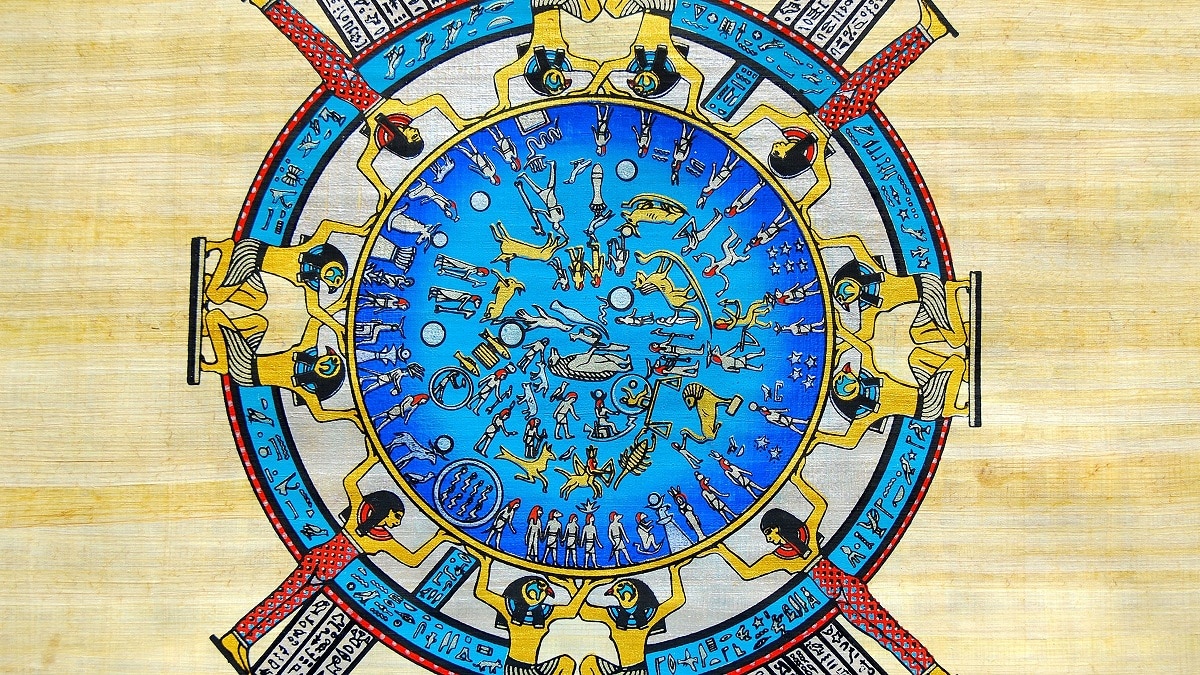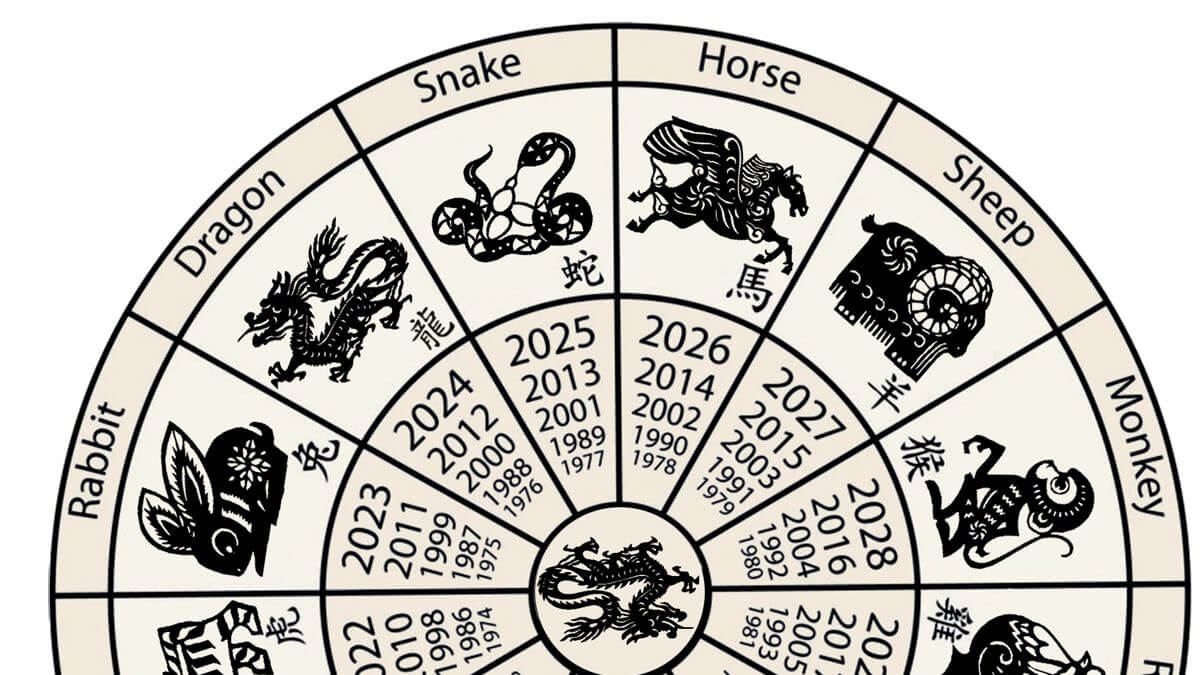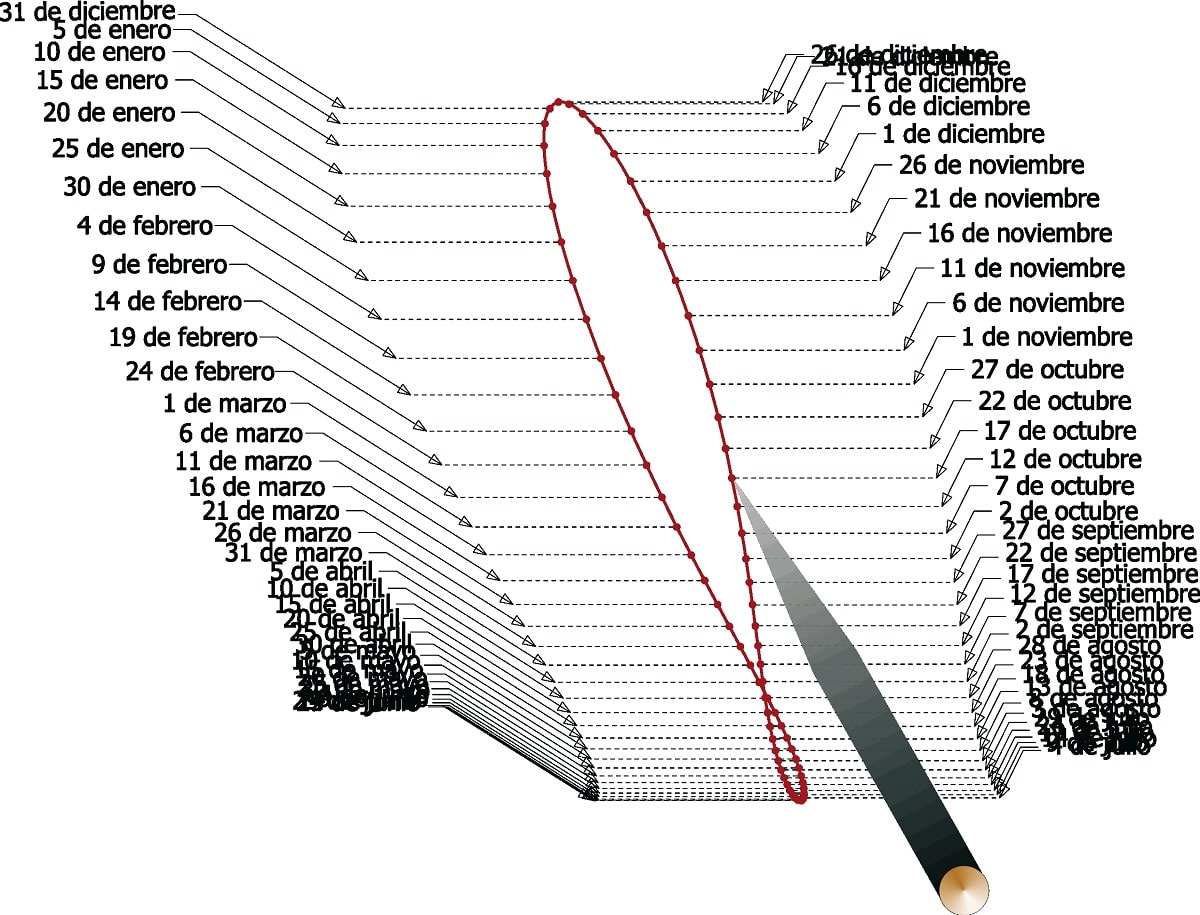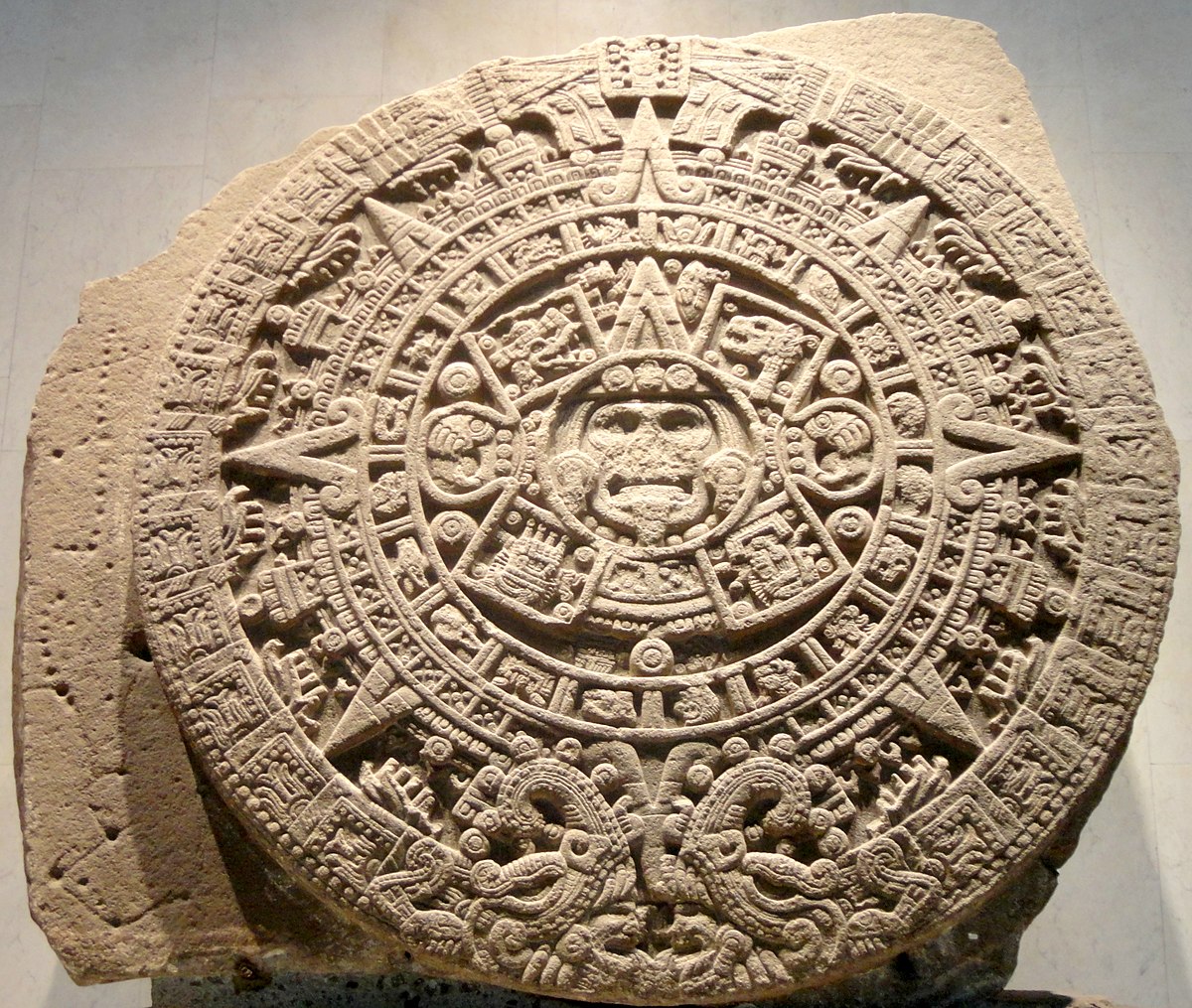
We are all used to following the solar calendar but not many know where it comes from or what it means. In addition to being a calendar within which we can find different types, it is evident that it is different from the lunar calendar. It has some unique characteristics and they are worth mentioning here.
Therefore, we are going to dedicate this article to tell you what the solar calendar is, what its origin and all its main characteristics.
What is the solar calendar

The solar calendar is the calendar that governs our lives. It is a dating system based on a seasonal year of approximately 365 1/4 days, which is the time it takes for the earth to go around the sun.
The Egyptians seemed to be the first to develop a solar calendar. The reappearance of the dog-Sirius (Sothis) in the eastern sky was a fixed point each year, coinciding with the annual flood of the Nile. They made a calendar for 365 days. It consists of 12 months, 30 days per month, and 5 days added to the end of the year, causing his calendar to gradually go wrong.
The Egyptian Ptolemy III Euergetes added a day to the basic 365-day calendar every four years in the Canopus decree (237 BC) (this practice was also introduced into the Seleucid calendar adopted in 312 BC).
In the Roman Republic, Emperor Caesar in 45 BC. Replaced the chaotic republican Roman calendar by the Julian calendar, which may be based on the Greek lunar calendar. The Julian calendar assigns 30 days or 31 days to 11 months through February; a leap year is allowed every four years. However, later on, the Julian calendar made the solar year too long by adding a quarter of a day to the year; the solar year is actually 365.2422 days.
By the middle of the 10th century, overtime had caused a cumulative error of about 1582 days. To correct this error, Pope Gregory XIII formulated the Gregorian calendar in 5, from October 14 to 400 of that year, and omitted leap years because they belong to a hundred years that cannot be divisible by 1700, for example, 1800, 1900 and XNUMX. From all the explanations, we see that various types of solar calendars have appeared, also marked by location. Our current Gregorian calendar is the Gregorian calendar, but it won't hurt if we know what the other Gregorian calendars are.
Types of solar calendar

Tropical solar calendars
The tropical solar calendar is a calendar dominated by tropical years, and its duration is approximately 365 days, 5 hours, 48 minutes and 45 seconds (365,24219 days). The tropical year can be from the spring or autumn equinox to the next, or from the summer or winter solstice to the next.
Although today's Gregorian calendar has 365 days in a normal year, we add a leap day almost every four years to keep pace with the tropical year. Without the correct number of leap years, our calendar will quickly get out of sync. This happens in the Julian calendar with too many leap years. Eventually, it was superseded by the Gregorian calendar.
The following are tropical solar calendars:
- Gregorian calendar
- Julian calendar
- Baha'i calendar
- Hindu calendar
- Coptic calendar
- Iranian Calendar (Jal_li Calendar)
- Tamil calendar
- Thai solar calendar
Each of these calendars has a 365-day year and is sometimes expanded by adding an additional day to form a leap year. This method is called "collation", where the inserted dates are "staggered". Also, there is the Zoroastrian calendar, which it is a religious calendar for the devotees of Zoroaster and is an approximation of the tropical solar calendar.
Sidereal solar calendars
The Bengali calendar is the best example of the stellar solar calendar. This is usually 365 days, plus one day to make a leap year. The 12 solar months are identified as one of the six seasons (two months in each season). Each month represents a specific constellation.
This type of calendars They are used for divination and have important meanings in different religions. This calendar can also use the lunar month. Hence, the Bengali calendar is also called the lunar-solar calendar.
The following are sidereal solar calendars:
- Bengali calendar
- Sanskrit calendar
- Malaysian calendar
Differences from the lunar calendar

We have seen how the solar calendar is based on the movement of the sun and is more familiar to people. But it is not the only calendar, although we must also talk about the lunar calendar, which is governed by the different phases of the moon. In this way, the solar calendar is significantly different from the lunar calendar, which uses the moon to calculate months. Although the two calendars use different methods to measure months, both can help us accurately track time and manage our lives.
On the other hand, the most obvious difference between the lunar calendar and the solar calendar are the celestial bodies that are used to measure the passage of time. The lunar calendar uses the phase of the moon to measure time. Generally, a month is the time between the new moon and the new moon. The time required for the earth to revolve around the sun is one solar year.
The solar calendar usually measures the time between the vernal equinoxes. Because it takes the moon the same time to rotate around the earth, the moon always shows the same face to the earth. That is why its other extreme has never been seen. New moons appear every 29,5 days. Astronomers call the time between new moons a synodic moon.
All the lunar calendars that people create are based on synodic months, not the months that we can find in the solar calendar. In fact, the solar calendar has been established as a month that we usually use regularly, unlike the lunar calendar, which It is most widely used for crops and esoteric subjects.
As you can see, there are numerous differences between the lunar and solar calendar. I hope that with this information you can learn more about the solar calendar, its characteristics and its origin.